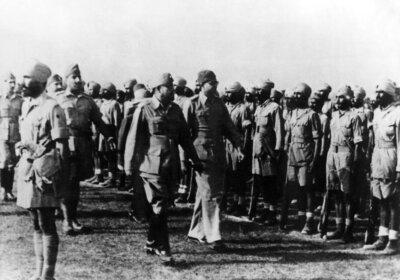Mobile phones have altered our way of life, and the idea of a future without voice calling, text messaging, and mobile Internet access is uncomfortable to many. We are all aware that mobile phones did not appear overnight. They matured with the advancement of technology. And what we are using today is the best till date, which helped us sort our life easily.
The current generation of mobile phones is still being distributed and embraced by users. By the time most of us have adopted 4G, there will be another standard to pursue. Today, we will call into the past and examine the short history of mobile phones.
Pre-Standardization, often known as “0G”
In 1947, AT&T was one of the first companies to market mobile telephony. By the end of the year, the service known as “Mobile Telephone Service” (MTS) had expanded to more than a hundred towns and highways. A service operator was required to link incoming and outgoing calls.
1G or Analog Cellular Networks
The initial generation of mobile networks set the groundwork for today’s networks. Utilizing several cell tower locations, each linked to network-enabled users to travel and even transfer cell towers in the middle of a conversation. It was a revolution based on existing analog technology, the first of which was constructed in 1977 in Chicago.
AT&T developed the Analog Mobile Phone System (AMPS), and it took the FCC 11 years to accept AT&T’s original request in 1971 before they were granted the 824-894MHz frequency band to operate AMPS.
In 1979, Japanese telecommunications giant NTT followed western researchers by constructing its network. After five years, it was the first nationwide 1G network. Then, in 1981, the Nordic Mobile Telephone (NMT) network was established. It was the first to operate in Denmark, Sweden, Finland, and Norway and to provide international roaming.
“2G” refers to digital cellular networks
As technical progress accelerated, so did the development of mobile phones. In the 1990s, two new digital technologies were introduced: the European GSM standard and the North American CDMA standard. As demand increased, more and more cell tower sites were constructed. In addition to technical advances in batteries and internal components, mobile devices were much smaller.
SMS messaging was introduced as a result of 2G, with the first computer-generated SMS transmitted in the United Kingdom in 1992. A year later, Finland delivered the first SMS between individuals using GSM technology. In the late 1990s, pre-paid mobile phones and plans developed, greatly popularising SMS among people of all ages.
Using 2G technology, the very first download services were created, allowing customers to download ringtones. In Finland, mobile phones were used as an alternative payment option for services such as parking and vending machines.
Mobile Broadband, sometimes known as “3G,”
NTT DoCoMo pioneered the first mobile Internet service in Japan in 1999 using existing 2G technology, but it was quickly supplanted in October 2001 by the introduction of the world’s first 3G network. In the years that followed, several nations, including South Korea, the United States, the United Kingdom, and Italy, launched the first 3G networks in Europe in 2003.
While 3G was still being developed, a variety of “2.5G” services were introduced to modernize previous technology. While technologies such as GPRS and EDGE offered improvements over regular 2G, they could not match the speed of current 3G technology.
3G revolutionized the mobile phone market and permitted broad mobile Internet and transmission services such as TV and radio for the first time. Manufacturers of mobile devices hopped on the bandwagon, and smartphone use exploded. By 2005, 3G had advanced further, prompting the coinage of the names “3.5G,” “turbo 3G,” and “3G+” to refer to HSPDA (High-Speed Downlink Packet Access), HSPA, and HSPA+.
IP native or “4G”
While no formal 4G standards exist, many technologies have claimed ownership of the term. Sprint was the first to deploy WiMAX in the United States. Still, LTE, popular in North America but nonexistent in certain regions such as Australia, has proven to be the most successful. 4G represents the transition to native IP networks, bringing mobile Internet closer to home Internet connections.
Speed is obviously the most significant benefit that is potentially 10 times faster than 3G speeds. The fourth generation of mobile communication is constantly growing, and we may expect to see new standards, speed boosts, and coverage improvements in the next years. Read this article to better grasp 3G and 4G mobile Internet.
Conclusion
It is impossible to summarise such a rich history of mobile phones briefly. However, this article has covered the important events, gadgets, and occurrences in mobile communication. The next time you’re Tweeting or Facebook on your iPhone, spare a thought for the innovators of analog, the first digital voice-only networks, and the dismal Internet speeds that 2G networks provided.
For more such interesting facts and updates stay hooked to Panchayiti.























Leave a Reply